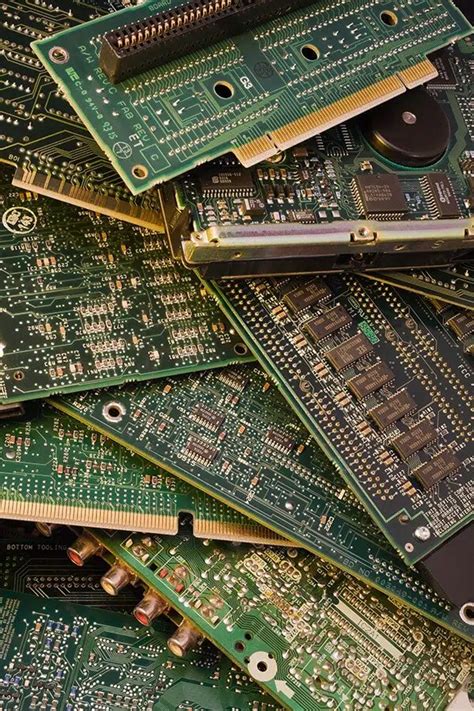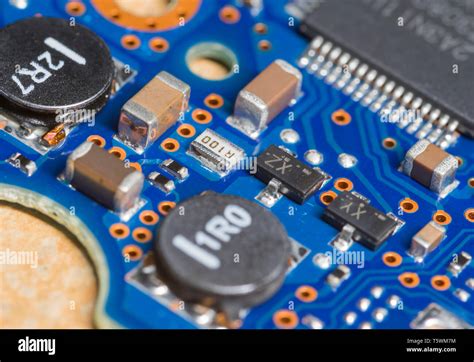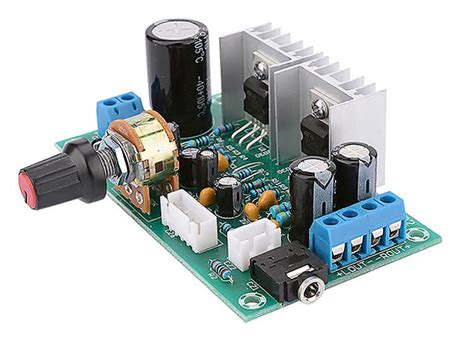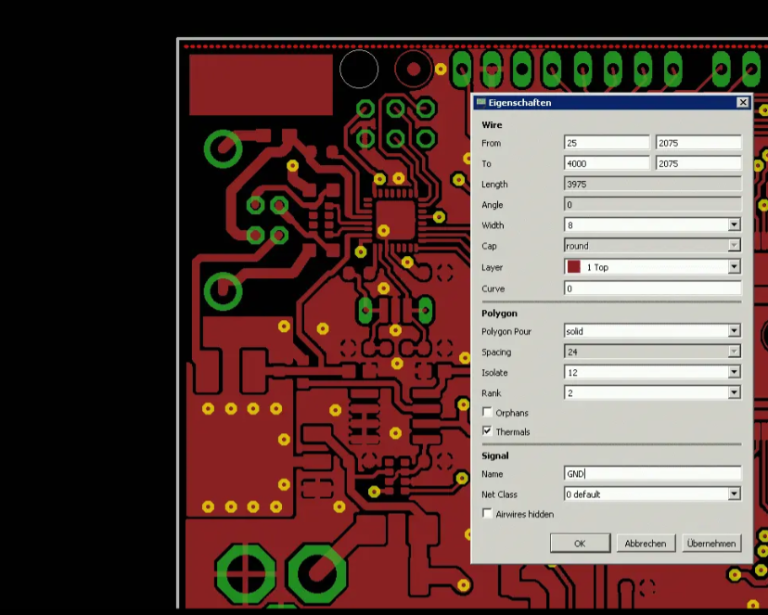Unlocking Innovation: Custom PCB Printing and Assembly Solutions
Key Takeaways
Custom PCB printing and assembly have emerged as pivotal solutions in modern electronic manufacturing, enabling a breadth of possibilities for engineers and designers. By leveraging custom PCB assembly, businesses can achieve an unparalleled level of flexibility, allowing for intricate designs tailored to specific project requirements. This adaptability not only facilitates adjustments during the design stage but also contributes to the overall efficacy of the production process. Furthermore, advancements in technology associated with PCB assembly processes are gradually enhancing production efficiency—reducing time-to-market while maintaining high-quality standards. Industries ranging from consumer electronics to medical devices are witnessing transformative changes through these custom solutions, enabling them to stay competitive and innovative. As such, investing in pcba resources is not merely an option but a strategic necessity for companies aiming to lead in their respective fields. By embracing these advancements, organizations can unlock new potentials and meet evolving market demands effectively.
Introduction to Custom PCB Printing and Assembly
In today’s fast-paced technological landscape, the demand for custom PCB printing and assembly is growing rapidly. These solutions provide opportunities for engineers and designers to push the boundaries of innovation, allowing for more complex and efficient designs. With custom PCB assembly (often referred to as PCBA), manufacturers can tailor specifications exactly to their project needs, thus enhancing product performance and reliability. The flexibility offered by custom printing ensures that each board can accommodate unique layouts, sizes, and functionalities, which significantly contributes to overall design creativity.
Moreover, embracing custom solutions in PCB manufacturing can lead to improved production efficiency. By streamlining the assembly process and reducing time-to-market, companies can satisfy consumer demands more swiftly while maintaining high quality. In essence, custom PCBs not only bridge the gap between theoretical design concepts and tangible products but also drive technological advancements across various sectors.
“Adopting cutting-edge technologies in custom PCB development can be transformative for any project.”
This perspective emphasizes the potential of pcb assembly techniques to revolutionize existing practices in many industries such as electronics, automotive, and medical technology. Thus, understanding the nuances of custom PCB printing is essential for capitalizing on these innovations effectively.
The Importance of Flexibility in PCB Design
In an ever-evolving technological landscape, flexibility in PCB design is crucial for meeting the diverse requirements of modern applications. Custom PCB printing and assembly enable designers to tailor their circuits precisely to their project’s specifications, allowing for unique configurations that standard solutions may not support. The ability to adapt designs quickly facilitates better responsiveness to changes in market demands and emerging trends. This adaptability is especially significant in sectors such as consumer electronics, medical devices, and automotive industries where innovation is relentless and time-to-market is essential. Moreover, when combined with efficient pcb assembly processes, these customizable solutions lead to enhanced production efficiency, reducing waste and improving the overall quality of the final product. By embracing custom PCBA, companies can ensure their products not only stand out in a competitive marketplace but also meet stringent regulatory requirements while fostering innovation in technology development. Thus, achieving a balance between creativity and practicality becomes a major advantage for those leveraging innovative PCB solutions.
Enhancing Production Efficiency with Custom Solutions
In today’s fast-paced manufacturing landscape, custom PCB printing and assembly have become critical for businesses seeking to enhance production efficiency. By tailoring the design and production processes, companies can meet specific project requirements more effectively, thus reducing lead times and minimizing waste. For instance, employing PCB assembly (often referred to as PCBA) allows for streamlined integration of components, enabling a quicker turnaround from design to finished product.
By leveraging advanced techniques such as automated assembly and precision printing, manufacturers can achieve higher accuracy and consistency in their products. This results in fewer defects and a reduction in the need for costly rework. Moreover, using custom solutions allows businesses to be adaptable; they can quickly respond to changing market demands without overhauling their entire production process.
Table 1 below illustrates the key factors that contribute to enhanced production efficiency through custom PCB assembly solutions:
| Factor | Description |
|---|---|
| Design Optimization | Tailored designs that meet specific performance criteria. |
| Automated Processes | Use of machines to reduce human error and increase speed. |
| Material Selection | Choosing components that enhance durability and functionality. |
| Scalability | Flexibility in scaling operations up or down based on demand. |
| Integration of New Technologies | Adoption of the latest technologies to improve processes. |
Overall, investing in custom PCBA solutions not only enhances production efficiency but also positions companies at the forefront of innovative manufacturing practices, ultimately delivering superior products that meet the evolving needs of various industries.
Technological Advancements Driven by Custom PCBs
The realm of electronics has witnessed significant transformation, largely fueled by advancements in custom PCB printing and assembly. These innovations are not just enhancing traditional manufacturing methods; they are redefining them. Custom PCBs allow for intricate designs that were once deemed impossible, enabling engineers to push the boundaries of functionality while maintaining compact sizes. This is particularly crucial in sectors such as medical devices, where precision is paramount. Moreover, advancements in pcb assembly techniques lead to improved reliability and performance of electronic products. Techniques like surface mount technology (SMT) enhance the density and efficiency of components, essential for modern applications that require higher performance within tighter spaces. As a result, the capabilities of PCBA processes are expanding, integrating features such as automated testing and real-time monitoring during production. This contributes not only to enhanced production efficiency but also to reduced time-to-market for new technologies. Industries can leverage these advancements to innovate rapidly, ultimately driving technological progress across various applications—from consumer electronics to automotive systems—ensuring they remain competitive in a fast-paced environment.
Industry Applications of Custom PCB Printing and Assembly
Custom PCB printing and assembly, also known as PCBA, have become pivotal across various sectors, driving innovation and operational efficiency. In the consumer electronics realm, companies leverage these solutions to produce compact and high-performance devices that cater to an ever-growing demand for functionality and sleekness. In the automotive industry, tailored PCB designs are implemented in advanced driver assistance systems (ADAS), enhancing vehicle safety and navigation capabilities. Furthermore, in medical technology, custom PCBs play a crucial role in the development of sophisticated diagnostic equipment, ensuring precise data collection for better patient outcomes. Additionally, sectors like telecommunications benefit significantly from customized PCBA, where faster data transmission technologies are continually evolving. By optimizing design flexibility, custom PCB printing not only meets specific project needs but also accelerates the pace of innovation across industries. The integration of this technology facilitates a more agile production process, thereby improving overall efficiency while meeting stringent regulatory standards in various fields.
Best Practices for Successful PCB Projects
To ensure optimal outcomes in any PCB assembly project, adherence to best practices is crucial. Collaboration between designers and manufacturers early in the process lays the groundwork for streamlined production. This step can prevent costly revisions later on. Utilizing advanced design software aids in creating a robust prototype, allowing teams to identify potential issues before production begins. Moreover, maintaining a clear specification list is vital; this document should outline all requirements, including tolerances and material types, to avoid confusion later. Furthermore, incorporating modular design principles can enhance flexibility, enabling quicker adaptations to meet changing project needs without significant redesign efforts. Timely communication with suppliers regarding materials and components ensures availability and adheres to the project’s timeline. Finally, conducting thorough testing at each stage of the PCBA process guarantees high-quality output and addresses any defects promptly. By focusing on these best practices, teams can significantly improve their chances of delivering successful PCB projects that meet or exceed industry standards.
Future Trends in Custom PCB Manufacturing
As technology continues to advance, custom PCB printing and assembly is poised to evolve in ways that will significantly impact various industries. One of the most promising trends is the increasing integration of smart manufacturing techniques, leveraging automation and data analytics to enhance pcb assembly processes. The rise of Internet of Things (IoT) applications demands more complex and compact PCBA designs which allow for innovative functionalities in smaller footprints. Additionally, the growing emphasis on sustainable practices is pushing manufacturers towards eco-friendly materials and production methods, which can help reduce waste and improve energy efficiency. Furthermore, advancements in 3D printing technology are facilitating rapid prototyping and testing, enabling designers to iterate on their concepts with unprecedented speed. Overall, these trends signify a shift towards more adaptive, innovative practices in custom PCB manufacturing, providing businesses with the tools they need to stay competitive in an increasingly demanding market. Embracing these changes will be crucial for organizations looking to harness the full potential of custom PCBs and ensure they are ready for the future.
Conclusion: Embracing Innovation through Custom Solutions
In today’s fast-paced technology landscape, custom PCB printing and assembly represents a vital avenue for innovation. The ability to tailor PCB assembly processes not only enhances design capabilities but also drives the overall efficiency of production. With pcba solutions being highly adaptable, companies can respond quickly to market demands while maintaining a focus on quality and precision. By embracing these customized solutions, businesses can harness important advancements that directly influence their capabilities across various industries. The meticulous attention to detail in custom processes fosters an environment where creativity can flourish, allowing for the development of cutting-edge products that lead to competitive advantages. As industries increasingly prioritize flexibility and technological integration, understanding and implementing custom PCB assembly will be critical for maintaining relevance in a rapidly evolving market landscape.
Conclusion: Embracing Innovation through Custom Solutions
As we navigate through the rapidly evolving landscape of technology, custom PCB printing and assembly emerge as pivotal solutions that can redefine industries. The flexibility provided by these solutions allows designers to push the boundaries of what is possible, leading to innovative architectures that were previously deemed impractical. By utilizing pcb assembly services, companies can achieve a level of design sophistication that enhances the functionality of their products while maintaining cost efficiency. The integration of pcba into various applications underscores the importance of precise manufacturing processes, ensuring reliability and durability in the final product. As businesses begin to embrace these advancements, they not only enhance their production efficiency but also contribute to technological progress across sectors. Ultimately, investing in custom PCB printing and assembly not only enhances design capabilities but also ensures that companies remain competitive in an ever-changing market. The journey toward innovation is ongoing, and those who adapt will undoubtedly thrive in this dynamic environment.
FAQs
What is custom PCB printing and assembly?
Custom PCB printing and assembly, often referred to as PCBA, is a tailored process of designing and manufacturing printed circuit boards (PCBs) that meet specific project requirements. This approach allows for optimized layouts, materials, and component placements that align with the unique needs of each application.
How does flexibility in PCB design impact project success?
Flexibility in PCB design is crucial as it enables engineers to adapt their designs based on evolving technological requirements. With custom PCB solutions, designers can easily integrate new features, modify existing structures, and explore innovative layouts, ultimately enhancing functionality and performance.
What are the advantages of using custom PCB solutions for production efficiency?
Custom PCB solutions improve production efficiency by allowing manufacturers to streamline their processes. By utilizing tailored designs, components can be placed more strategically, reducing waste during production and minimizing errors. This results in faster turnaround times while maintaining high-quality standards.
What industries benefit from custom PCB printing and assembly?
Many industries benefit from custom PCBA, including telecommunications, automotive, consumer electronics, medical devices, and industrial equipment. Each sector requires specific design considerations that only custom solutions can fulfill, driving innovation across various fields.
How can I ensure a successful PCBA project?
To ensure a successful PCBA project, it’s essential to collaborate closely with your manufacturing partner. Engaging in thorough design reviews, clear communication about specifications, setting realistic timelines, and understanding material choices will significantly contribute to achieving your project’s objectives.







